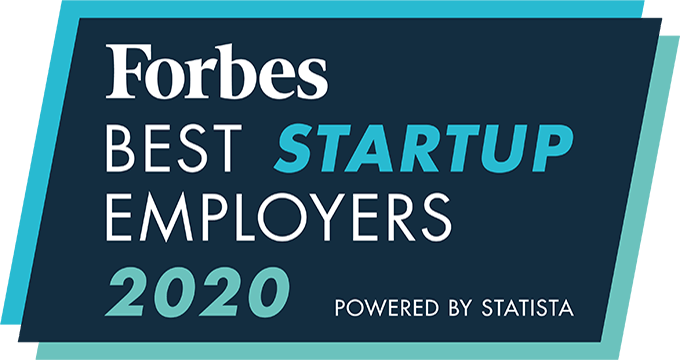This article was originally published on July 30, 2021 in Forbes. Find the original publication here.
According to McKinsey & Company researchers, there is a linear relationship between racial and ethnic diversity and better financial performance. But, we don’t have to take their word, as there’s an abundance of available data signifying the importance of a diverse workforce to financial performance and attracting candidates. No wonder so many companies are paying closer attention to diversity and inclusion goals.
Of course, all of this is nothing new, as the significance of DE&I was discovered by corporations more than two decades ago. So, why aren’t we seeing major improvements in this space? The answer is complex. First of all, companies can only ask employees to voluntarily self-identify and report their gender and racial information on job applications — however, fewer than 10% actually bother to do so. At an aggregate level, such information would help companies to identify diversity gaps and take corrective action, but demographic data can be scarce. One can understand why employees might not want to volunteer such information given the complexities and stigma around discrimination in employment against women, the disabled, minorities and various ethnic groups.
The good news is that technology can help solve this very problem using advanced AI algorithms and natural language processing (NLP) technology to identify employees based on names and locations. My company offers a DE&I algorithm, for instance, but business leaders can access this type of technology through various other platforms and plug-ins to work in harmony with any other tools. The results can provide breakdowns of gender and ethnicity, for example, at an organizational level with a high degree of accuracy (70-90% accuracy). Sounds amazing, right?
But, the question remains: How do you integrate such a robust capability into your existing talent acquisition technology stack to continuously measure your intake of talent in terms of diversity while also assessing the very talent sources feeding your pipeline?
Imagine as a hiring organization your goal is to increase the number of women in management. For the sake of this hypothetical scenario, let’s assume you have to rely on two talent sources — one from within (based on promotions) and one external source. AI can help hiring managers or department heads to track qualified women candidates through your organization’s existing pool of talent via your database of talent while also tapping external sources from suppliers. For illustrative purposes, this scenario is simple, but if you apply DE&I technology to every one of your talent sources, the benefits multiply immeasurably.
Of course, doing this effectively isn’t simple, but it’s well worth the effort. This process might even be less complicated than you think. It can be boiled down to five steps:
1. Identify Your Sources of Workforce Talent. Internal talent sources typically include employee referrals, a company career portal, internal recruiters, paid job boards and others. External talent sources include staffing suppliers, executive search firms, independent contractors and freelancers. Each of these is capable of finding qualified talent. But you won’t necessarily know what percentage of these candidates are both qualified and diverse.
2. Pool Your Talent Sources Into a Single Talent Container. Once you’ve identified all of your talent sources both internal and external, it’s time to integrate them into a single data source, which I like to call a talent container. Simply put, your talent container is your database where talent from all sources is curated. This is critical to ensuring that no stone goes unturned during the talent acquisition process. After all, talent is your greatest corporate asset.
3. Enrich Your Talent Container. Any talent pool is instantly enriched by applying various types of algorithms capable of parsing candidate data. This process requires multiple steps ranging from tagging candidates by skill set, geographic preference, and fit to measuring candidate relevance by recent work history and other important factors. Adding DE&I to your algorithm based on the information available from candidate resumes to identify gender and diversity information, for example, simply adds an additional layer that’s critical to building your workforce.
4. Continue the Enrichment Process on a Quarterly Basis. After the initial enrichment process is over, the talent container should undergo business intelligence (BI) evaluation to create insights about the diversity of your candidates while also running a diversity analysis on each of your talent sources. This ensures accountability. Such a process should be repeated every quarter to measure the diversity and skills composition of your entire talent container. Of course, this information should all be mapped to your organizational talent and diversity goals. The analysis from mapping unveils the strengths and weaknesses of your talent pool within the context of organizational needs. This analysis empowers you to make necessary adjustments to your various talent sources to achieve your desired talent goals.
5. Monitor Diversity Across the Entire Talent Pool. By constantly monitoring diversity levels within your talent container, you’ll uncover problems and issues before they become ongoing trends. The continuous monitoring of external talent pools and your existing workforce for both skills and demographics will enable you to create a diverse workforce that drives greater business results.
At the end of the day, the creation of a diverse workforce is much more than a necessary facet of a strong public image. It’s a critical business need for any organization hoping to compete in today’s global economy. Talent acquisition professionals must rise to the challenge. For HR professionals charged with meeting their organization’s diversity goals, it’s a tall order. But, I assure you that technology is more than up to the challenge and the results will speak for themselves.
About Sameer Penakalapati
Sameer Penakalapati is the Founder and CEO of CEIPAL. He is dedicated to advising and investing in technology startups in HR Tech and AI. Read Sameer Penakalapati’s full executive profile here.









